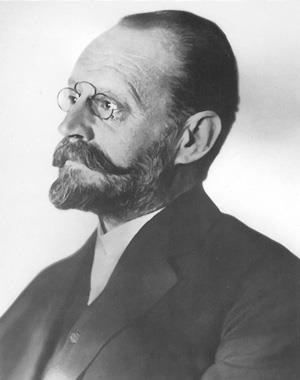Chemistry makes light work
Funny things happen in the dark. When you flip off the switch, even adults start to chatter and giggle, and then inevitably the gloom is lit by chinks of light as their watches, phones and tablets emerge and blink into life. Indeed, in this age of abundant illumination, light has actually become a pollutant – how many of us ever get to see the stars these days? Our journey from flickering candles to today’s perennial nocturnal glare is, at heart, a chemical story, and one of its principal protagonists is Carl Auer.

Auer was the son of Alois Auer, director of the imperial printworks in Vienna, Austria. He developed an interest in science at an early age and ended up studying chemistry with Adolf Lieben, Vienna’s highly influential head of department. Lieben soon recommended Auer to his mentor, Robert Bunsen, who was then Germany’s leading chemist. Bunsen had invented spectral analysis with Gustav Kirchhoff, and had commissioned the design of a burner especially for that purpose. He was now using the technique to explore the mysterious rare earth elements.
The chemical similarity of these elements was driving chemists across Europe mad. As they strove to discover and characterise them, disputes raged over purity and priority. When Auer arrived in Heidelberg, Bunsen was methodically recording their emission spectra in the hope that this might help locate them in Dmitri Mendeleev’s periodic table. It required careful and excruciatingly tedious separations, and the native metals were then isolated by electrolysis of molten salts in iron crucibles.
In 1882, Auer was awarded a PhD without having submitted a thesis – a student this good, in Bunsen’s view, needed no such evidence. Auer returned to Lieben’s lab with a sample of the rare-earth mineral gadolinite in his pocket and with Bunsen’s prophetic words ringing in his ears: that the problem of domestic illumination would one day be solved by having a solid oxide glow in a flame.
With money inherited from his father, Auer worked unpaid on rare earth separation using Lieben’s lab, devising a more efficient separation scheme. Instead of relying on fractional precipitation using oxalate, he would fractionally crystallise the double ammonium nitrates that were much more soluble. Using Bunsen’s spectroscopy, Auer began to suspect that the element ‘didymium’ might be a mixture. In 1885 he reported the separation of a green and a pink fraction: ‘praseodidymium’ (the green twin) and ‘neodidymium’ (the new twin). Only later would the names be contracted to what we know today.
To brighten the emission spectra, Auer tried soaking some cotton gauze with solutions of his rare earths. To his amazement, the cotton burned away leaving a fragile ceramic mesh that glowed intensely, giving much more light per unit of fuel than anything seen before. He worked feverishly to optimise the composition, eventually settling on a mixture of lanthanum and zirconium. Naming the mixture ‘Actinophor’ he not only patented his invention in every country he could think of, but also bought a factory near Vienna to make his secret mixture, which he sold to firms that licensed his patent.

Though the business was initially profitable, the lamps’ greenish hue and their fragile gauzes meant that Thomas Edison’s incandescent filament lamps became serious competitors.
Undeterred, Auer went back to the lab. He eventually found that a 99:1 thorium–cerium mixture outperformed everything. With an acute sense of marketing, Auer unveiled his lamp on a dark November night in 1891 outside the Opera Café in Vienna. He sold 90,000 lamps in the first nine months. By 1913, the figure was 300 million.
There was just one problem: lighting the lamps. Recalling how the electrolysis crucibles in Bunsen’s lab sparked when being cleaned with a file, Auer and his works manager Hattinger devised a pyrophoric iron–rare earth alloy that sparked when struck. You could light lamps. Or of course, cigarettes.
Auer was ennobled by the Emperor, and his profits allowed him to buy a huge estate with a castle, which he immediately equipped with a private lab. His factories for the separation of rare earths also provided the radium for Ernest Rutherford’s legendary experiments.
But Auer was well aware that the electric light was a growing threat to his business. And so he decided to capitalise on its popularity. He identified its key flaw – the fragility of the carbon whiskers and reasoned that the solution must lie with metal filaments. But which? Believing osmium to have the highest melting point, he developed a way of making uniform filaments that could be placed in an evacuated bulb. His patent of 1893 marks the birth of the modern electric light bulb, remembered in the name ‘Osram’, but later superseded by Siemens’ tantalum and then GE’s tungsten.
Auer’s technology may seem quaint and old-fashioned today. Yet were Auer and Bunsen here today, perhaps in the phosphors of our fluorescent and LED lamps they’d recognise the descendants of those rare-earth soaked cotton threads that first lit our world.
Andrea Sella teaches chemistry at University College London, UK
References
A von Welsbach, US Patent, US399174












No comments yet